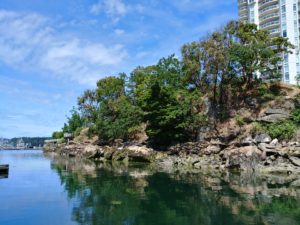Despite being an old concept for engineering, psychology, and disaster management, the famous natural scientist C.S. Holling introduced ecological and socio-ecological resilience in the early 1970s. He synthesized social and ecological theory to study and enhance adaptive (as opposed to simply reactive) ecosystem management. Holling’s notion of ecological resilience, however, may not be entirely applicable to urban social systems or appropriate to understand them and address their challenges. While ecology and engineering usually emphasize recovery and restoration of a previous stable state, social system unpredictability may make transition to a new state and transformation necessary or often desired.
Ostrom’s seminal work on sustainability of socio-ecological systems (SES) offers insights for their resilience as well as it illustrates the complexity of a system’s components and their relationships and interactions. A resilient SES is characterized by its dynamic nature, adaptive capacity, multiple stable states, redundancy, and persistence to exist and renew in the face of gradual or rapid change. Such a system can therefore absorb disturbance after a sudden shock or a continuous stress, manage change, and reorganize while still retaining “essentially the same function, structure, identity, and feedbacks”.
Urban resilience draws on various disciplines and is very popular in urban planning, since 90% of urban areas are situated on coastlines meaning increased vulnerability for the majority of global population. Cities have so far been remarkably resilient systems, but today they experience more challenges that require flexible, long-term solutions addressing multiple environmental, social, and economic concerns simultaneously.
Defining urban resilience is a debate in the related literature; scholars identified 25 different definitions from 2003 to 2013, most of which seemed too focused or used vague language. Meerow et al. offer a comprehensive definition: “urban resilience refers to the ability of an urban system – and all its constituent socio-ecological and socio-technical networks across temporal and spatial scales – to maintain or rapidly return to desired functions in the face of a disturbance, to adapt to change, and to quickly transform systems that limit current or future adaptive capacity”.
Urban resilience and urban sustainability have had somewhat parallel trajectories in theory and practice, sometimes used interchangeably because of their shared principles and goals, and other times with resilience understood as a requirement or component of sustainability. Whereas local resilience focuses more on protection against threats and crises and seeks stability and diversification, local sustainability prioritizes local/regional self-reliance, resource protection, and planning for and monitoring urban development. Other differences relate to implementation: urban resilience is considered more passive (mostly top-down monitoring, reactivity, and recovery) and urban sustainability more active (mostly bottom-up-driven co-evolution of sub-systems toward a common goal).
Both approaches need to be considered within a whole-systems decision-making, as the descriptive nature of resilience can be complementary to the normative nature of sustainability. Policies for sustainability may call for efficiencies that, if applied, could lead to reduced resilience due to the absence of redundancy; for instance, planning for higher densities could lead to reduced green space and impact community health.
Similarly, without systemic thinking, efforts to increase resilience in a neighbourhood could result in decreased resilience in the region; or actions to make specific infrastructure resilient could negatively impact the resilience of other societal sectors. Resilience planning is necessary not only against natural disasters, but also in case of chronic socioeconomic turbulence like the ongoing crisis due to the COVID-19 pandemic. In this respect, resilience supports the normativity of sustainability that a sustainable society pursues constant improvement.
Bibliography
Benson, M. H., & Craig, R. K. (2014). The End of Sustainability. Society & Natural Resources,27(7), 777–782. https://doi.org/10.1080/08941920.2014.901467
Chelleri, L. (2012). From the «Resilient City» to Urban Resilience. A review essay on understanding and integrating the resilience perspective for urban systems.Documents d’Anàlisi Geogràfica,582, 287–306. https://doi.org/10.1007/978-3-642-29470-9_2
Childers, D. L., Pickett, S. T. A., Grove, J. M., Ogden, L., & Whitmer, A. (2014). Advancing urban sustainability theory and action: Challenges and opportunities.Landscape and Urban Planning,125, 320–328. https://doi.org/10.1016/j.landurbplan.2014.01.022
Elmqvist, T., Andersson, E., Frantzeskaki, N., McPhearson, T., Olsson, P., Gaffney, O., Takeuchi, K., & Folke, C. (2019). Sustainability and resilience for transformation in the urban century.Nature Sustainability,2(4), 267–273. https://doi.org/10.1038/s41893-019-0250-1
Folke, C. (2006). Resilience: The emergence of a perspective for social–ecological systems analyses.Global Environmental Change,16(3), 253–267. https://doi.org/10.1016/j.gloenvcha.2006.04.002
Hamman, P. (2017). Definitions and Redefinitions of Urban Sustainability: A Bibliometric Approach.Urban Environment,11(April).
McGinnis, M. D., & Ostrom, E. (2014). Social-ecological system framework: Initial changes and continuing challenges.Ecology and Society,19(2). https://doi.org/10.5751/ES-06387-190230
Meerow, S., & Newell, J. P. (2016). Urban resilience for whom, what, when, where, and why?Urban Geography,00(00), 1–21. https://doi.org/10.1080/02723638.2016.1206395
Meerow, S., Newell, J. P., & Stults, M. (2016). Defining urban resilience: A review.Landscape and Urban Planning,147, 38–49. https://doi.org/10.1016/j.landurbplan.2015.11.011
NYU Marron Institute, & 100 Resilient Cities. (2018).100RC Handbook: Planning for Resilient Urban Growth.
Roseland, M. (2012).Toward Sustainable Communities: Solutions for Citizens and Their Governments(4th ed.). New Society Publishers.
Walker, B., Holling, C. S., Carpenter, S. R., & Kinzig, A. (2004). Resilience, Adaptability and Transformability in Social–ecological Systems.Ecology and Society,9(2), 5. https://doi.org/10.1103/PhysRevLett.95.258101
Zhang, X., & Li, H. (2018). Urban resilience and urban sustainability: What we know and what do not know?Cities,72(July 2017), 141–148. https://doi.org/10.1016/j.cities.2017.08.009

















